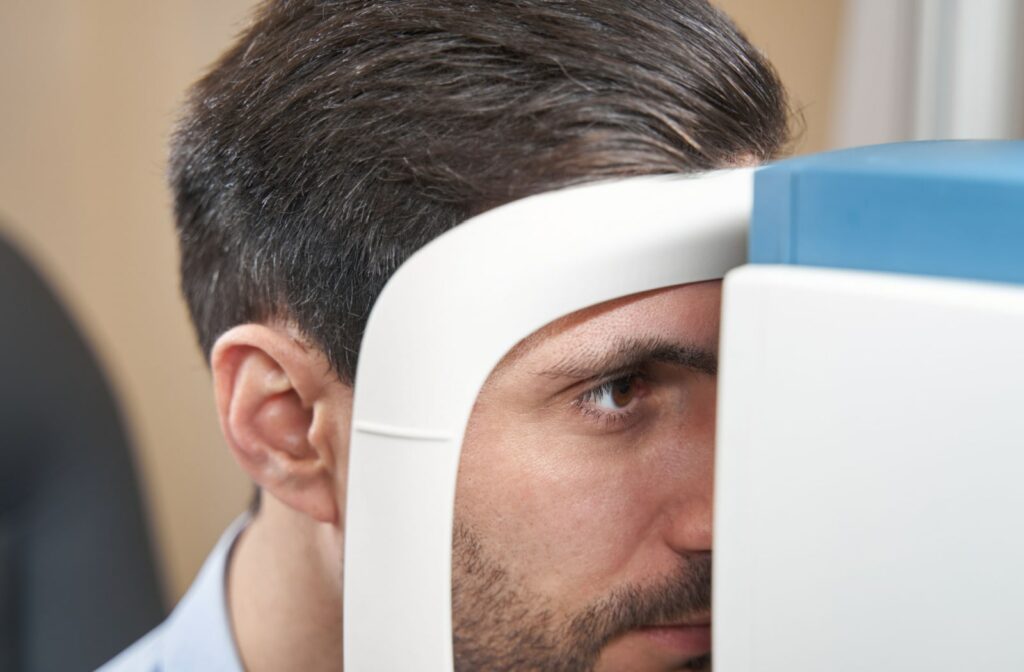All Categories
Featured
Laser eye surgical procedure has transformed vision correction, supplying millions of people an option to glasses and get in touch with lenses. Over the years, innovations in modern technology and strategies have considerably improved the safety and security, precision, and outcomes of these treatments. Let's explore the sophisticated developments shaping the future of laser eye surgical treatment.
One of the most innovative advancements is wavefront-guided LASIK. This technology makes use of comprehensive 3D mapping of the eye to identify distinct blemishes in a person's vision.
![]()
SMILE is a minimally intrusive treatment that has gained popularity in the last few years. Unlike LASIK, which involves producing a corneal flap, SMILE only needs a small cut to eliminate a slim layer of tissue (lenticule) from the cornea. This technique preserves corneal toughness and lowers the risk of dry eyes. It's specifically advantageous for people with high degrees of nearsightedness or thinner corneas.
![]()
The introduction of femtosecond lasers has actually changed corneal surgical procedure. These ultra-fast lasers operate with amazing precision, enabling doctors to produce smoother and a lot more predictable cuts. In LASIK procedures, femtosecond lasers are used to create the corneal flap with unequaled accuracy, reducing issues and enhancing recovery times.
Topography-guided laser treatments concentrate on attending to irregularities in the corneal surface area. This innovation is specifically useful for individuals with corneal marks or irregular astigmatism. By developing an extra uniform corneal form, topography-guided procedures can boost both vision quality and patient complete satisfaction.
Expert system (AI) is increasingly being integrated right into laser eye surgical treatment. AI-driven algorithms analyze huge amounts of data to help specialists in planning and executing procedures with higher accuracy. This technology makes sure optimal therapy criteria and reduces the likelihood of human error.
Thanks to developments in modern technology, more individuals are currently eligible for laser eye surgical procedure. Techniques like SMILE and topography-guided therapies make it possible to treat people with problems that were formerly considered contraindications, such as high thin corneas or refractive errors.
Modern laser eye surgery strategies prioritize individual convenience and quicker healing. Improved precision minimizes tissue damage, minimizing swelling and enabling people to return to their daily tasks within days.
While not a refractive surgery by itself, corneal cross-linking has actually come to be an important treatment for keratoconus patients. When combined with laser techniques, it can improve and maintain the cornea vision for those with this progressive eye condition.
Final Thought
Innovations in laser eye surgery continue to press the borders of what's feasible in vision correction. From personalized treatments to AI-driven technologies, these modern technologies are making surgical treatment more secure, more reliable, and available to a broader range of clients. If you're thinking about laser eye surgical treatment, seek advice from with a certified ophthalmologist to discover exactly how these developments can profit your specific requirements and lifestyle.
- Customized Wavefront-Guided LASIK
One of the most innovative advancements is wavefront-guided LASIK. This technology makes use of comprehensive 3D mapping of the eye to identify distinct blemishes in a person's vision.
- SMILE: Little Cut Lenticule Extraction

SMILE is a minimally intrusive treatment that has gained popularity in the last few years. Unlike LASIK, which involves producing a corneal flap, SMILE only needs a small cut to eliminate a slim layer of tissue (lenticule) from the cornea. This technique preserves corneal toughness and lowers the risk of dry eyes. It's specifically advantageous for people with high degrees of nearsightedness or thinner corneas.
- Femtosecond Laser Technology

The introduction of femtosecond lasers has actually changed corneal surgical procedure. These ultra-fast lasers operate with amazing precision, enabling doctors to produce smoother and a lot more predictable cuts. In LASIK procedures, femtosecond lasers are used to create the corneal flap with unequaled accuracy, reducing issues and enhancing recovery times.
- Topography-Guided Therapies
Topography-guided laser treatments concentrate on attending to irregularities in the corneal surface area. This innovation is specifically useful for individuals with corneal marks or irregular astigmatism. By developing an extra uniform corneal form, topography-guided procedures can boost both vision quality and patient complete satisfaction.
- Man-made Intelligence in Laser Surgical Procedure
Expert system (AI) is increasingly being integrated right into laser eye surgical treatment. AI-driven algorithms analyze huge amounts of data to help specialists in planning and executing procedures with higher accuracy. This technology makes sure optimal therapy criteria and reduces the likelihood of human error.
- Expanded Candidacy for Surgical Procedure
Thanks to developments in modern technology, more individuals are currently eligible for laser eye surgical procedure. Techniques like SMILE and topography-guided therapies make it possible to treat people with problems that were formerly considered contraindications, such as high thin corneas or refractive errors.
- Faster Recovery Times
Modern laser eye surgery strategies prioritize individual convenience and quicker healing. Improved precision minimizes tissue damage, minimizing swelling and enabling people to return to their daily tasks within days.
- Corneal Cross-Linking for Keratoconus
While not a refractive surgery by itself, corneal cross-linking has actually come to be an important treatment for keratoconus patients. When combined with laser techniques, it can improve and maintain the cornea vision for those with this progressive eye condition.
Final Thought
Innovations in laser eye surgery continue to press the borders of what's feasible in vision correction. From personalized treatments to AI-driven technologies, these modern technologies are making surgical treatment more secure, more reliable, and available to a broader range of clients. If you're thinking about laser eye surgical treatment, seek advice from with a certified ophthalmologist to discover exactly how these developments can profit your specific requirements and lifestyle.
Latest Posts
Learn About Auto Services & More: Full Services Guide from Montclare Auto Repair
Published May 28, 25
1 min read
Explore the Best Auto Repair Deals in Montclare, Chicago
Published May 25, 25
1 min read
Discover WyHy FCU – Top Benefits for Your Money Goals
Published May 23, 25
1 min read